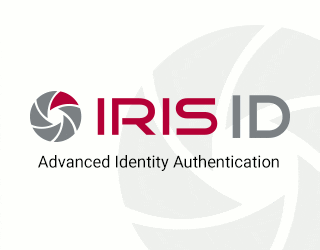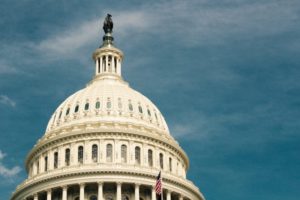Biometric technology has advanced by leaps and bounds in recent years, and most of the credit tends to go to the private sector. Rightly so: One needs only to look at Apple’s new Face ID facial recognition system or Princeton Identity’s iris scanning technology to see the impressive results of private sector innovation. But the government has always had an important role to play, too. The public sector has driven the biometrics market for most of its existence, and it continues to be the destination for a wide range of biometric solutions. But government authorities aren’t just clients in the industry; they also play an active role in promoting innovation, through a range of efforts and activities.
Private Sector Collaboration
 Key among these is government bodies’ organization of competitions and other challenges aimed at the private sector and academia. These are very often organized through the National Institute of Standards and Technology (NIST), an agency of the US Department of Commerce. NIST helped to propel the kind of computer vision technology at the core of biometrics with its “Tatt-C” challenge back in 2015, which asked competitors to develop the best system for matching different images of the same tattoo. And more recently, NIST’s Nail-to-Nail Fingerprint Challenge spurred private sector firms to refine technology that would allow for the automated collation of full, nail bed-to-nail bed fingerprints.
Key among these is government bodies’ organization of competitions and other challenges aimed at the private sector and academia. These are very often organized through the National Institute of Standards and Technology (NIST), an agency of the US Department of Commerce. NIST helped to propel the kind of computer vision technology at the core of biometrics with its “Tatt-C” challenge back in 2015, which asked competitors to develop the best system for matching different images of the same tattoo. And more recently, NIST’s Nail-to-Nail Fingerprint Challenge spurred private sector firms to refine technology that would allow for the automated collation of full, nail bed-to-nail bed fingerprints.
That exercise was conducted in collaboration with the Intelligence Advanced Research Projects Activity (IARPA), a division of the Office of the Director of National Intelligence, and for its part IARPA announced “Fusion of Face Recognition Algorithms” competition this summer that will bestow a total of $70,000 in price money to firms that succeed in combining multiple facial recognition algorithms together for the analysis of a single input of imagery. Another recent program is the Department of Homeland Security’s Biometric Technology Rally, organized by the DHS’s Science and Technology Directorate (S&T). That program evaluated facial and iris scanning systems submitted by a number of major biometrics firms including Gemalto and IDEMIA, and generated some impressive results.
All of these activities have helped to nudge forward the state of the art, with private sector firms participating not only to win prize money but also prestige and higher standing in the overall biometrics market, which can improve their prospects for government contracts.
In-house R&D
 IARPA has also helped to push the state of the art forward with its own internal research programs. Last year, the agency officially unveiled its already long-running “Odin” research program aimed at thwarted presentation or ‘spoofing’ attacks across the key modalities of facial, fingerprint, and iris biometrics. A subset of the program, called “Thor”, is focused particularly on the development of new technologies to detect presentation attacks, and is known to have attracted some high-talent collaboration from the private sector in Crossmatch, which was just selected to move onto Phase Two of the program.
IARPA has also helped to push the state of the art forward with its own internal research programs. Last year, the agency officially unveiled its already long-running “Odin” research program aimed at thwarted presentation or ‘spoofing’ attacks across the key modalities of facial, fingerprint, and iris biometrics. A subset of the program, called “Thor”, is focused particularly on the development of new technologies to detect presentation attacks, and is known to have attracted some high-talent collaboration from the private sector in Crossmatch, which was just selected to move onto Phase Two of the program.
Meanwhile, the Department of Homeland Security has been quietly developing cutting-edge plenoptic camera technology that would enable it to scan the faces of individuals through vehicle windshields, a system that appears designed for use by the Customs and Border Protection agency in its expanding biometric border efforts. And the DHS is also thought to be secretly developing a biometric surveillance program codenamed “HART” that will entail the collection of not only facial biometrics, but also iris, voice, and even DNA data.
The Big Guns
 And then there’s the military, which appears to have a substantial budget and appetite for biometrics research. The Department of Defense has repeatedly shown itself to be willing to explore cutting-edge biometric technologies for its own purposes: In addition to being one of the first government agencies – perhaps the only one, at the time of writing – to explore the potential of behavioral biometrics in authenticating staff internally, the DoD has also been working on a ‘patterns of life’ authentication system that would look at a range of metrics connected through the mobile devices of its personnel, including gait biometrics and work patterns.
And then there’s the military, which appears to have a substantial budget and appetite for biometrics research. The Department of Defense has repeatedly shown itself to be willing to explore cutting-edge biometric technologies for its own purposes: In addition to being one of the first government agencies – perhaps the only one, at the time of writing – to explore the potential of behavioral biometrics in authenticating staff internally, the DoD has also been working on a ‘patterns of life’ authentication system that would look at a range of metrics connected through the mobile devices of its personnel, including gait biometrics and work patterns.
The DoD is also looking to deploy sophisticated new biometric technologies in the field, of course. This year the Army revealed that it’s working on a ‘Next Generation Biometric Collection’ system designed for the collection of facial, fingerprint, and iris biometrics by soldiers, and that it’s also exploring technologies enabling the collection of voice and DNA biometrics in the field. Army researchers also announced this spring that they had developed an artificial intelligence system that can convert thermal images to facial portraits, allowing for even more sophisticated biometric surveillance on the battlefield and elsewhere.
This is all having or going to have a tangible effect on the broader field of biometrics, of course. Just as Army research led to the development of Cheetos, we’re going to see sophisticated commercial technologies built out of the R&D foundations now being laid by the US military.
The Right Policies
 Government authorities also help to foster innovation in the biometrics industry simply by going about their business in setting new policies, which often have the effect of driving new market opportunities. An obvious example is the US Customs and Border Protection agency’s Biometric Entry-Exit Program, the result of a Congressional mandate pertaining to the establishment of a biometric border control system. That has helped to fuel the evolution of biometric technologies for the airport, and particularly facial recognition, with solutions providers like NEC stepping up to the plate with high-performing technologies. Likewise, high-level discussions between US and British officials could soon set the framework for a joint biometric identity program that could further fuel the evolution of biometrics for air travel – and that has echoes among other countries as well, including Canada and the Netherlands.
Government authorities also help to foster innovation in the biometrics industry simply by going about their business in setting new policies, which often have the effect of driving new market opportunities. An obvious example is the US Customs and Border Protection agency’s Biometric Entry-Exit Program, the result of a Congressional mandate pertaining to the establishment of a biometric border control system. That has helped to fuel the evolution of biometric technologies for the airport, and particularly facial recognition, with solutions providers like NEC stepping up to the plate with high-performing technologies. Likewise, high-level discussions between US and British officials could soon set the framework for a joint biometric identity program that could further fuel the evolution of biometrics for air travel – and that has echoes among other countries as well, including Canada and the Netherlands.
Canadian authorities also recently announced plans to implement voice recognition to track refugees admitted to the country who haven’t yet been fully vetted, which is likely to further spur the development of voice biometrics technology. And speaking of the wider world, Chinese’ authorities insatiable appetite for biometric surveillance technology has led to the development of cutting edge solutions like face-scanning smart glasses for police authorities. Meanwhile, India’s pioneering biometric national ID program, Aadhaar, has fostered an entire market of its own, with ID-linked biometrics seeing all kinds of applications, from biometric ATMs to student registration at schools – and tech providers like Vision-Box, Iris ID, and NEXT Biometrics racing to keep up with the new market opportunities. All of these efforts demonstrate how government policy can help to further push innovation in the private sector. It’s a free market, but one that operates under the policy framework set by government authorities – and flourishes when the right policies are put into place.
***
Of course, the most tangible way in which the government helps to support the biometrics market is probably when it acts as a client, and as large as the consumer market has grown, the public sector will still remain a market driver for some time. But when it comes to real innovation – the development of new technologies and applications – the government really shines in its collaborative R&D work with the industry, its in-house projects (especially where the military is concerned), and its establishment of forward-thinking policies that seek to leverage sophisticated technologies. The government may be a big client in the biometrics industry, but it’s also a major player.
Government Biometrics Month is made possible by our sponsors: NEC Corporation of America & Iris ID
—
September 20, 2018 – by Alex Perala






![FedID 2018: The Biometrics Industry Speaks [Audio Interview Roundup]](https://findbiometrics.com/wp-content/uploads/Tampa-150x150.jpg)

Follow Us